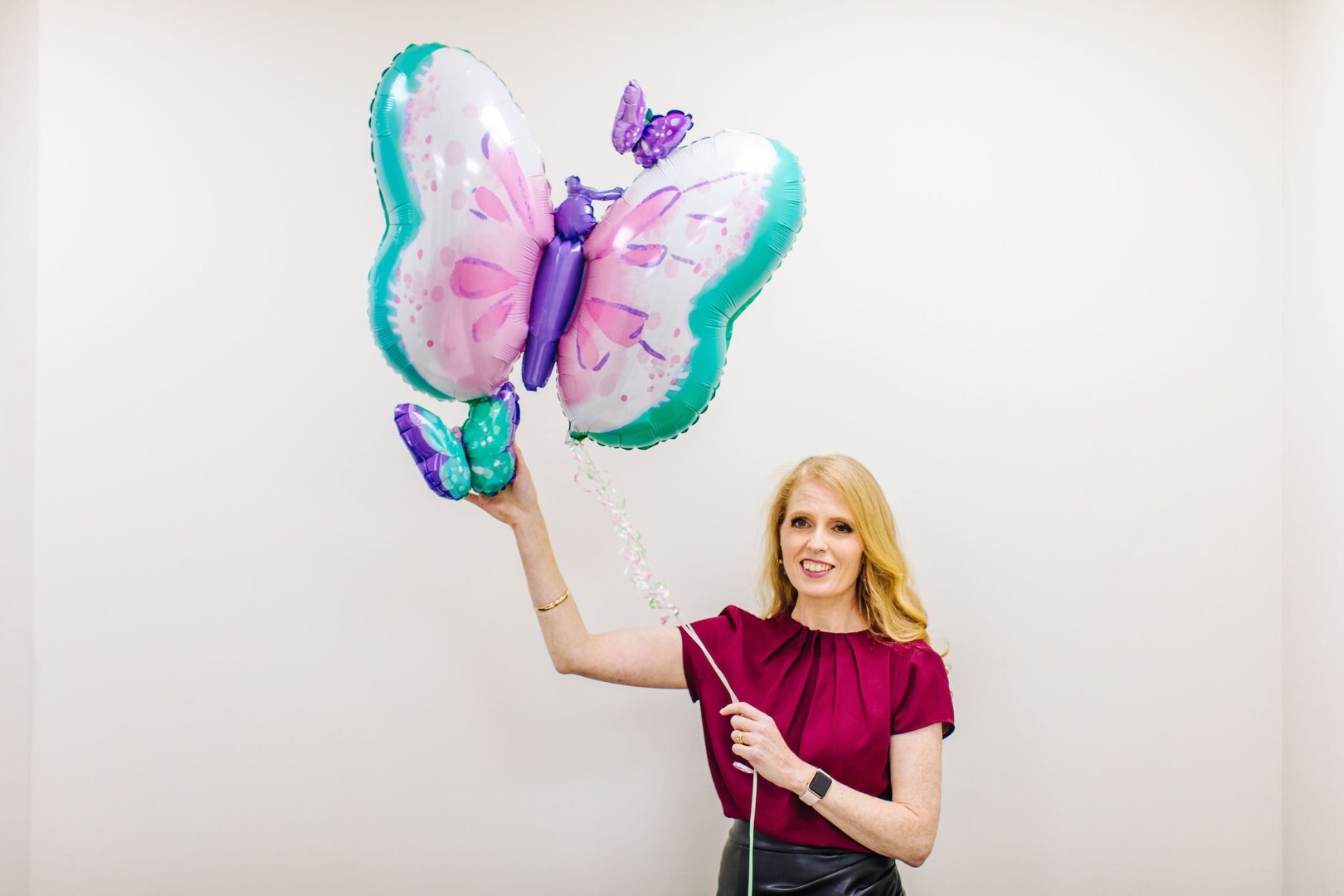
As an executive coach, I have the privilege of partnering with top leaders - from those sponsored by their organisations to individuals who commission me privately.
A CEO once came to me with a dilemma. He had a brilliant executive, someone with all the right skills and experience, but he simply wasn't having the impact the company needed. "He's smart and hardworking," the CEO said, "but in the boardroom, he just gets lost. He says the wrong things and doesn't command the room."
This isn't an isolated story.
As an executive coach (a professional who partners with leaders to help them identify and achieve their development goals), I see this scenario repeatedly.
Talented professionals hit a wall, not because they lack expertise, but because they haven't cultivated the subtle, yet powerful qualities of executive presence. It's crucial to be being regarded as a trusted leader.
Executive presence is the combination of gravitas, communication, and appearance that signals a leader's credibility and competence. It's the ability to project confidence, poise, and authority in a way that inspires trust and influences others.
It was popularised by Sylvia Ann Hewlett who wrote about it in her best-selling book, Executive Presence (now updated to 2.0).
Think of leadership presence as a leader’s non-verbal resume. It’s what allows you to be taken seriously and respected by senior leaders, peers and reports. It's not about being the loudest person in the room; it's about having a quiet confidence and a sense of calm under pressure.
Executive presence is the bridge between potential and impact.
Technical expertise and hard work get you noticed, but executive presence gets you promoted, listened to, and trusted at the highest levels. Without it, even the most capable leaders struggle to win buy-in, inspire teams, or influence stakeholders. It involves working on your leadership skills to improve your effectiveness in the workplace.
As executive coach Muriel Wilkins says, “Executive presence isn’t about personality or flashiness; it’s about inspiring confidence through credibility and reliability.” I frame this as three interlocking qualities:

Credibility – Being a trusted source of knowledge, consistently demonstrating both valuable insights and a calm, positive demeanour that inspires confidence in your judgment.
Reliability – Demonstrating you can be counted on consistently and with integrity.
Relatability – Building authentic connections that make people feel seen and understood.
Like a magnolia bud unfolding, your executive presence develops from within. The journey to mastering your presence is the process of nurturing the three petals that form the core of your leadership: credibility, reliability and relatability.
At first, they may seem like separate parts, but as they grow, they come together to form a beautiful, resilient bloom. This flower, your presence, doesn’t just look good; it projects a quiet strength and confidence that has a lasting impact on everyone you meet.
Let’s explore each petal in more detail.
Credibility is earned by demonstrating expertise and adding value to every interaction. An executive who is credible is a trusted source of knowledge and insight. They are able to have high-level discussions with those around them. Here are some leadership development tips:
Deepen Subject Matter Expertise and Future-Focus: Stay current on industry trends, market changes, and competitive landscapes. This could involve subscribing to key publications, attending conferences, or engaging with industry thought leaders. The goal is for you to be strong in your strategic thinking and to be seen as the go-to person about the future of your industry or organisation.
Develop Strong Communication Skills: Credibility is conveyed through clear, concise, and structured communication. Refine your communication style to articulate complex ideas in simple terms. This includes:
Focusing on a single message: Before a meeting, clarify the main point to get across.
Use a confident tone: Work on vocal tone and projection to ensure your voice commands attention without being aggressive or meek.
Practicing active listening: Listening and asking thoughtful questions demonstrates a willingness to learn and understand, which enhances credibility and shows you're not just there to talk or be a passenger. Ensure you questions do not show that you haven't prepared for the meeting.
Develop a Strong Point of View: A credible leader doesn't just restate facts; they have a well-reasoned perspective. Move beyond simply presenting data to offering an interpretation and a recommendation. This involves thinking critically about the implications of information and being prepared to defend your stance. It also means having the humility to be proven wrong.
Master Non-Verbal Presence and Poise: This is your most immediate signal of respect and authority. It includes:
Strategic Attire: Choose clothing that signals that you take your role and your audience seriously. Ensures your clothing fits well, is clean and professional and matches the professional image you wish to convey.
Physicality: Cultivate strong posture, deliberate gestures, and unwavering eye contact to project calm, focused attention.
Commanding the Room: Enter a space with intention, claiming your seat at the table, and using your presence to draw focus rather than appearing distracted or hesitant. Make sure you think before you speak - ask insightful questions and deliver short insights (without a long monologue or unnecessary repetition).
Reliability is about demonstrating that you are dependable, trustworthy, and consistent. This is about turning up on time to meetings, being consistent in your emotions and getting work done (without excuses).
People must feel that your actions align with your words. Consider these actions:
Strengthen Emotional Intelligence: Reliability is often tied to composure under pressure. An executive who stays calm and composed during a crisis inspires confidence. Work on:
Self-awareness: Recognise your own emotional triggers and how your reactions are perceived by others.
Empathy: Understand the emotions and perspectives of your team and stakeholders. This builds trust and rapport.
Resilience: Practice strategies for bouncing back from setbacks, such as reframing challenges as learning opportunities.
Follow Through on Commitments: Nothing erodes reliability faster than a broken promise. Practise leadership accountability and follow up on commitments, no matter how small. This shows you are reliable and respect other people's time and effort.
Lead with Integrity and Transparency: Your actions are constantly under scrutiny. Be transparent about your intentions and make decisions that are ethical and consistent with the company's values. Being honest, even when it's difficult, reinforces your character and builds a strong foundation of trust with your team. Avoid blaming others when things go wrong or being hard to work with when you don't get your way.
Interestingly, executive presence is very much about being present. It's about listening, acknowledging others and taking in everything around you. It's not about worrying about the future and what you need to do or bemoaning what went wrong in in the past. This is what helps to make you more relatable.
Relatability is about being authentic and approachable, which makes your leadership feel more human and genuine.
Think of relatability as the emotional glue that holds credibility and reliability together. You are the expert in your field (credible) who always gets their team to deliver on their promises (reliable), but if you can't connect with people, your influence will be limited. Relatability makes people want to follow a leader, not just feel obligated to.
Here are some ways to build relatability:
Practice Empathy: This is the cornerstone of relatability. Actively listen to others' concerns and perspectives and validate their feelings. This isn't about agreeing with everything, but about showing that you understand and care.
Share Personal Stories Authentically (and Strategically): Vulnerability, when used strategically, builds trust. Share relevant, brief anecdotes about your own professional challenges or learning moments. This breaks down barriers and shows that they are human, not just a title.
Allow appropriate visibility into your personal life: Leaders who never share milestones or personal context can come across as closed off, which erodes trust. Appropriate sharing builds connection and helps people feel they know the real you.
Show Genuine Interest: Take a few moments to ask people about their lives outside of work. A simple question like "How was your weekend?" or "How's your family?" can build a lot of rapport and shows they see people as more than just a means to an end.
Connect on Shared Experiences: Find common ground with your team members. This could be anything from a shared hobby to a similar challenge they've faced. This creates a sense of camaraderie and psychological safety.
Ultimately, relatability helps an executive move from being just a manager to a true leader. When people feel connected to a leader, they're more engaged, more willing to go the extra mile, and more likely to trust their judgment - the ultimate goal of executive presence.

Executive presence isn't about being flashy or charismatic. It’s about a deeper, more intentional process - like a magnolia bud unfurling from within to reveal its true strength.
It's what turns being respected for what you know into being followed for who you are. By balancing the three interlocking petals of credibility, reliability and relatability, you project the quiet confidence and humanity that senior leaders need.
If you're struggling to get promoted, gain buy-in, or be taken seriously at the executive table, it's worth examining your presence. Often, it's the missing link keeping otherwise talented leaders stuck.
The journey to building your leader presence is a personal one, and a dedicated guide can make all the difference.
As your executive presence coach, I provide the one-on-one guidance and actionable strategies you need to master your presence and become the leader you were meant to be. Schedule a complimentary consultation with me here.

As an executive coach, I have the privilege of partnering with top leaders - from those sponsored by their organisations to individuals who commission me privately.

In today's fast-paced business world, effective leadership is more crucial than ever. But even the most talented leaders or business owners can benefit from an outside...